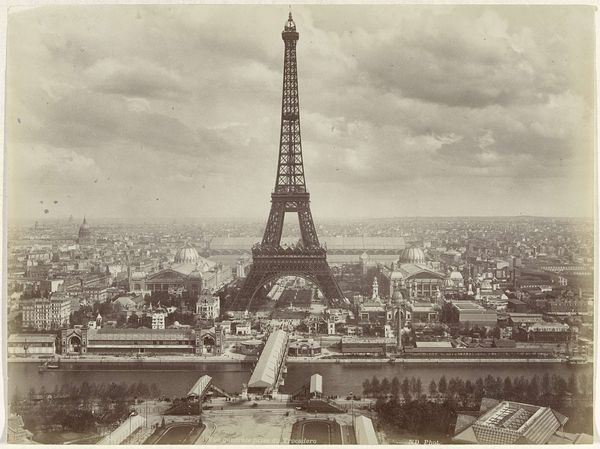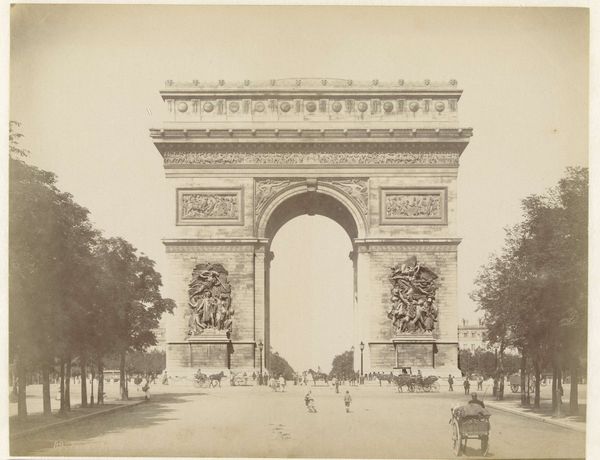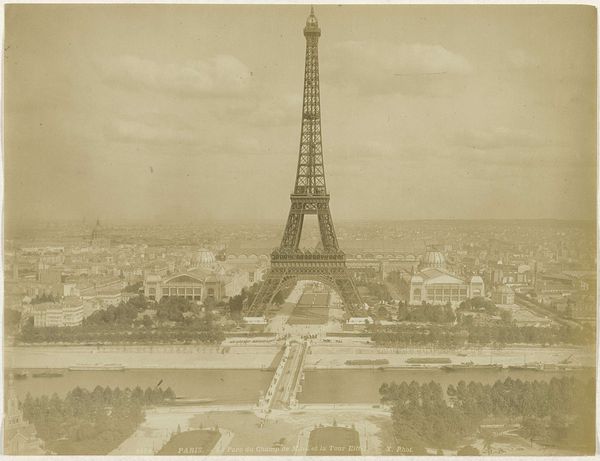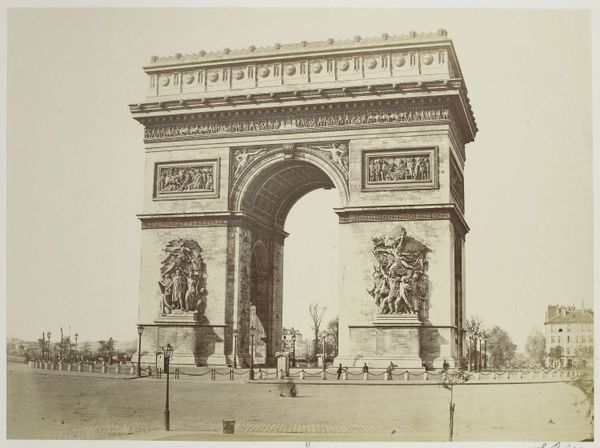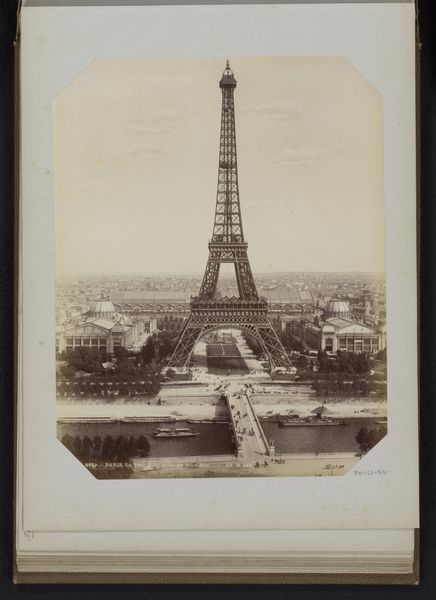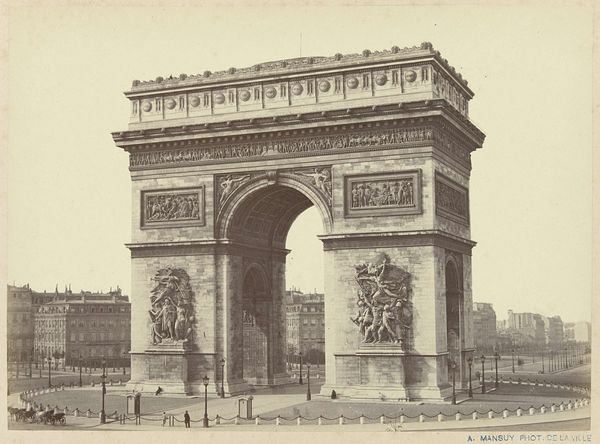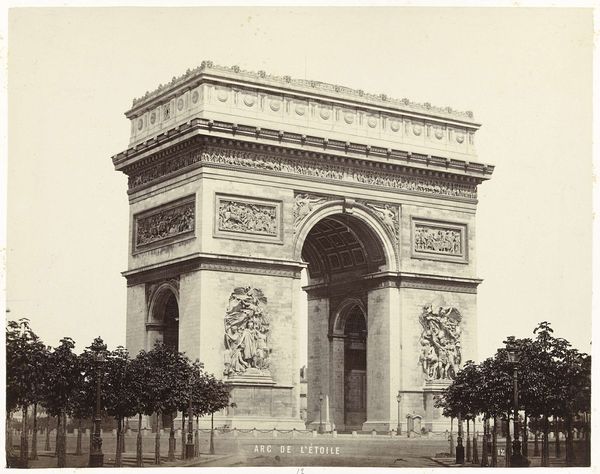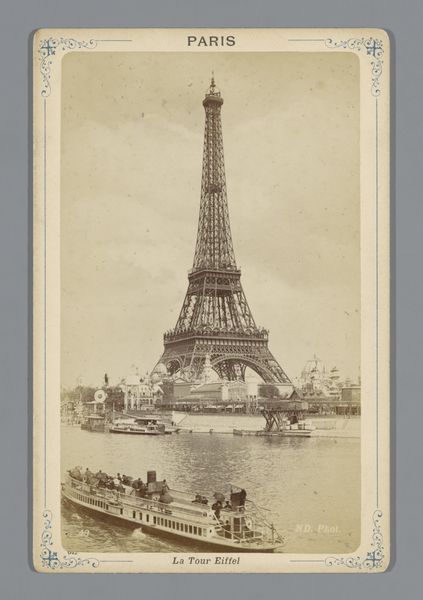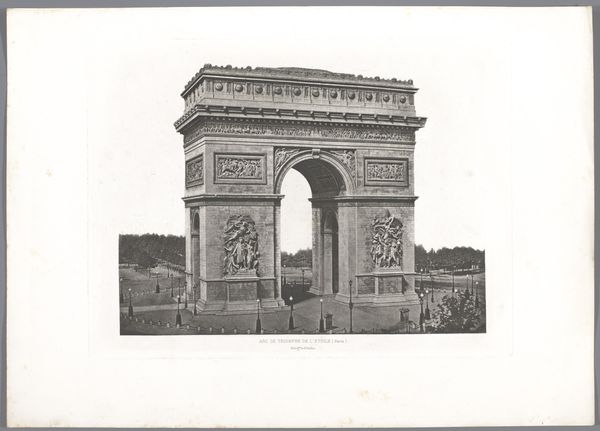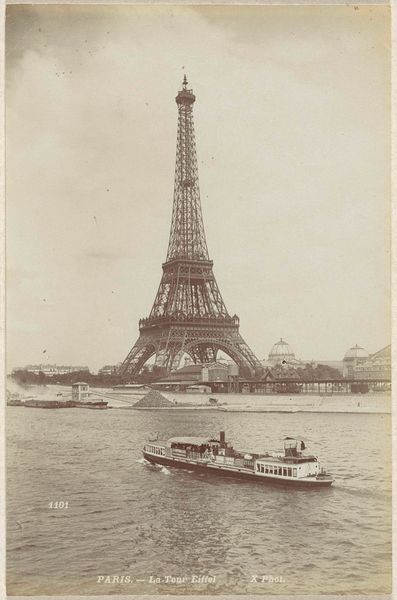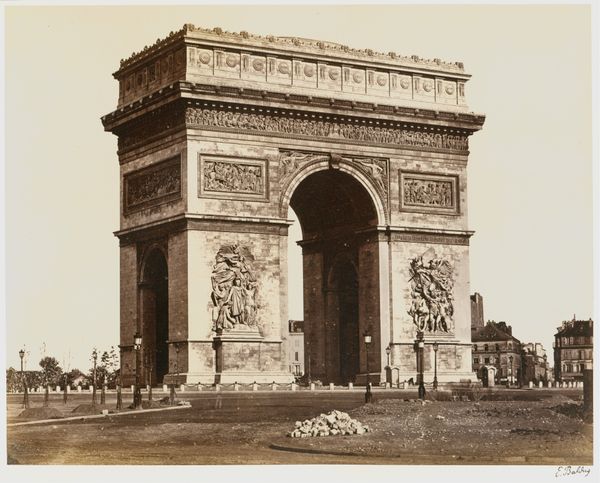
Onderste deel van de Eiffeltoren in Parijs met zicht op het Palais du Trocadéro c. 1889 - 1895
0:00
0:00
albumen-print, print, photography, albumen-print
#
albumen-print
# print
#
landscape
#
archive photography
#
photography
#
historical photography
#
cityscape
#
albumen-print
Dimensions: height 110 mm, width 187 mm
Copyright: Rijks Museum: Open Domain
Editor: Here we have an albumen print by Étienne Neurdein, dating roughly from 1889 to 1895, titled "Onderste deel van de Eiffeltoren in Parijs met zicht op het Palais du Trocadéro," or "Lower part of the Eiffel Tower in Paris with a view of the Palais du Trocadéro." I find the image so fascinating. It frames the Palais beautifully beneath the tower's arch. What stands out to you? Curator: This albumen print captures a moment of immense cultural and technological optimism. We see the Eiffel Tower, a symbol of industrial progress built for the 1889 Exposition Universelle, looming over the Palais du Trocadéro, a building constructed for a previous exposition. Think about how these grand structures were intended to shape public perception of French identity and technological prowess. Do you think this image challenged or reinforced those ideals? Editor: That's a great question. I suppose it depends on the viewer. Someone from the working class might see the tower as a symbol of oppression rather than progress. I'd be interested in the historical reception. Curator: Exactly! Initially, the tower was widely criticized by prominent artists and intellectuals, who saw it as an eyesore that clashed with the city's aesthetic. However, figures like Neurdein documented and shaped its growing popularity by transforming it into a celebrated, marketable commodity and patriotic symbol. It also highlights a significant moment when photography began to document and legitimize changing urban landscapes. How might this contrast with painting at the time? Editor: Well, painting probably afforded more opportunity for critique and perhaps romanticism. The sharp detail of photography emphasizes the tower’s industrial nature, but the composition tries to soften that through framing and classical allusions with the statuary in the foreground. I hadn’t really considered the role of photography in shaping opinions of modern architecture! Curator: And shaping how Parisian identity was both asserted and perceived both domestically and abroad. Glad to have sparked this connection. Editor: Absolutely, this has given me so much to think about regarding the cultural forces at play in this photograph.
Comments
No comments
Be the first to comment and join the conversation on the ultimate creative platform.
